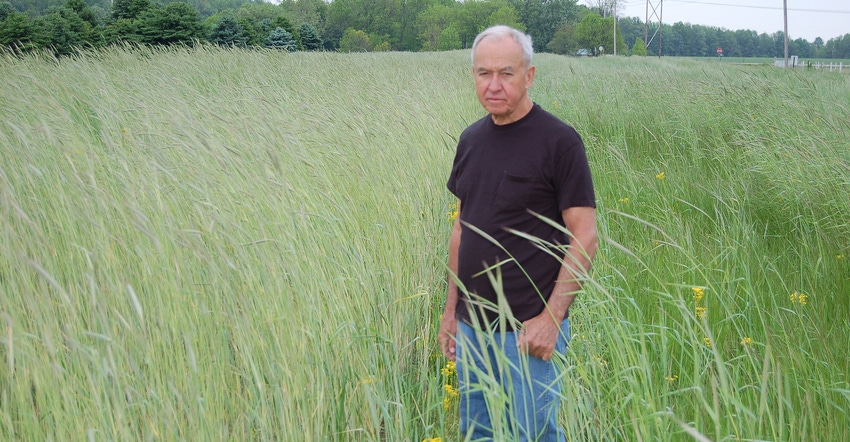May 29, 2017

An old saying goes like this: “First time, shame on you; second time, shame on me.” It means that if someone or something deals you a hard blow that you weren’t expecting, it’s not all your fault. But if you don’t learn from it and fall prey to the same mistake again, then it is your fault.
Bob Brewington, Versailles, believes that old axiom applies to what happened to many fields this spring. He saw horrific damage on conventionally tilled fields near him, and even had some damage himself. Brewington and his grandson farm in the shadow of the Versailles State Park in Ripley County. He’s an avid conservationist and ardent supporter of the Ripley County Soil and Water Conservation District.
Brewington contacted Indiana Prairie Farmer to share his thoughts. He believes this is a teachable moment.
Bob, did you see concrete examples of a difference in soil erosion in fields with cover crops vs. fields without cover crops? Yes, it was pretty obvious. We had about 600 acres with rye cover crop on it when the big rains hit. The stand wasn’t as good as we might have wanted, but it certainly did the job when those rains came. We didn’t see much, if any, visible signs of soil erosion there.
What did you see in other fields? One field stands out. The farmers elected to apply herbicides last fall. The only problem was that it was bare without much growing this spring. It’s a bit rolling, so when all that rain hit, it did a number on the field. There was lots of soil erosion. There was also nothing to slow down the water as it ran down the hill.
Applying herbicides in the fall is an accepted practice some people use to get a head start on weeds and to save time in the spring. It’s hard to do that and still have cover on it. I understand what you’re saying. I think one lesson from this spring, however, is that you really need to think carefully about what practices you use in which fields. For the cost of the herbicide application, around $25 per acre, you could have spent the money on cover crop seed and application costs instead. Then the rolling field would have had something growing on it when the intense rains hit.
I just think that if you have rolling fields, you need to figure out how to get some kind of protection out there over winter in case storms like this happen.
You mentioned that you still had damage on your farm. How did that occur? Our main issue was with an 8-inch tile we installed recently. It was part of a conservation practice with riprap, but so much water came rushing off conventional fields next door that it couldn’t handle it. We will likely do things a bit different when we put it back so that if we get another intense rain, there will be a better chance it can handle it.
What’s the take-home from spring 2017? If soils aren’t protected by some sort of cover, they’re vulnerable to soil erosion, especially on slopes. This is an opportunity to rethink what you’re doing and figure out how to get cover on those fields.
You May Also Like




